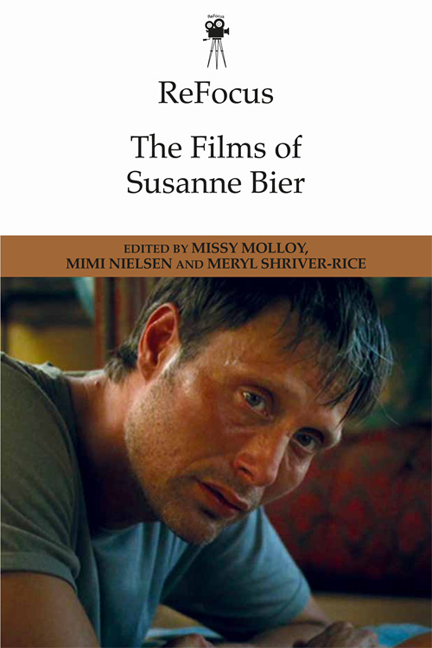Book contents
- Frontmatter
- Contents
- List of Figures
- Notes on Contributors
- Foreword
- Introduction: Susanne Bier's Boundary-Crossing Screen Authorship
- Part 1 Generic and Industrial Fluidity
- Part 2 Negotiating Identity
- Part 3 Authorship and Aesthetics
- Part 4 Transnational Reach
- Postscript: A Conversation with Susanne Bier
- Filmography of Susanne Bier
- Acknowledgments
- Index
9 - Vision and Ethics in A Second Chance (En chance til)
Published online by Cambridge University Press: 01 May 2021
- Frontmatter
- Contents
- List of Figures
- Notes on Contributors
- Foreword
- Introduction: Susanne Bier's Boundary-Crossing Screen Authorship
- Part 1 Generic and Industrial Fluidity
- Part 2 Negotiating Identity
- Part 3 Authorship and Aesthetics
- Part 4 Transnational Reach
- Postscript: A Conversation with Susanne Bier
- Filmography of Susanne Bier
- Acknowledgments
- Index
Summary
The majority of Susanne Bier's films pivot on a symbolic or literal collision, a confrontation that unsettles the emotional trajectory of the film narrative. The collision is metaphorically imagined in Family Matters (Det bli’r i familien, 1993) through the death of a mother and in Love Is All You Need (Den skaldede frisør, 2012) through the discovery of adultery, with both events bringing forth larger questions of identity and belonging. However, a car crash in Open Hearts (Elsker dig for evigt, 2002) and a murder committed under duress in Brothers (Brødre, 2004) pose violent confrontations that result in psychological crises. In her 2014 Danish-language film A Second Chance (En chance til), the site of conflict is the encounter between Andreas, a policeman, and Tristan, a heroin trafficker and addict whom Andreas had previously arrested in Copenhagen. When Andreas is called out with his partner, Simon, to intervene in a reported domestic dispute, he is surprised to discover not only that Tristan is living in Funen, but also that Tristan has a baby with his girlfriend, Sanne. After Andreas orders Sanne to move away from a door where she appears to be concealing something, Andreas is confronted by the sight of Tristan and Sanne's son, Sofus. The baby, relegated to a cardboard box on the bathroom floor, is freezing cold as he lies in his urine and feces. Even when juxtaposed with the turbulent interactions between Tristan and Sanne, this image of Sofus carries a resonance that unsettles not only the narrative, but also the sequencing of the film imagery itself. The framing of the shocking sight of the baby through a jarring sequence of jump cuts emphasizes the emotional impact on Andreas. By breaking the cinematographic syntax of the film sequence, this collision in Bier's oeuvre appears as a visual trauma, with the sight of Sofus manifesting as a wound that cannot be sutured.
Played out primarily through familial dynamics, A Second Chance contrasts two disparate family atmospheres: the seemingly perfect seaside domesticity of Andreas's life with his wife and son, Anna and Alexander, and the heart-wrenching squalor and abuse that persists in the apartment shared by Tristan, Sanne, and Sofus.
- Type
- Chapter
- Information
- ReFocus: The Films of Susanne Bier , pp. 173 - 186Publisher: Edinburgh University PressPrint publication year: 2018

